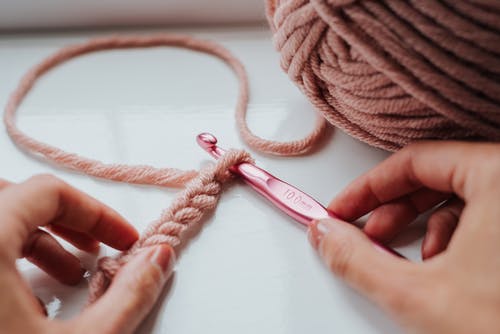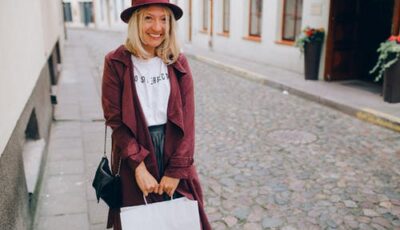
A captivating world of color is brought to life by vibrant yarns. The dyeing process behind this colorful transformation is both a science and an art, and modern technology has led to revolutionary techniques. But before we explore these dyeing methods, let’s begin our journey by understanding the basic building blocks of all yarns – their types and materials.
Yarn Types and Yarn Materials
Yarn is more than just a simple thread. It’s a complex blend of fibers, colors, and textures that offer limitless possibilities. To understand yarn in-depth, you need to be familiar with the different types and materials of yarn. Each yarn type reacts differently to dyes, thereby impacting the final product’s characteristics like appearance, feel, and durability.
- Wool: Derived from the fleece of animals such as sheep and goats, wool yarn is famous for its warmth, softness, and natural elasticity. Wool’s insulating properties make it a beloved choice for knitting cozy winter wear like sweaters, mittens, and scarves.
- Cotton: Valued for its lightweight, cotton yarn is the champion of breathability and pleasant softness. Cotton is a highly absorbent material often used for crafting household items like dishcloths, towels, and summer clothing. It remains cool to the touch and wears well over time.
- Synthetic: Synthetic yarns, including types like acrylic and polyester, are man-made fibers engineered to bring out certain qualities. Synthetics are known for their durability, affordability, and striking color retention, offering a wash-and-wear quality that is less prone to damage.
- Blended: As you might guess, blended yarns combine different materials to create something unique. Mixing wool with acrylic, for example, brings together the comforting warmth of wool with the bright, resilient properties of synthetic yarn.
With so many beautiful yarns to choose from, selecting the right one can feel overwhelming. To guide you through your yarn shopping journey, consider several key factors. Take into account qualities like color, texture, weight, and price. Also, you can find helpful information by visiting their website for additional product details or reading customer reviews.
Exploring Yarn Dye Techniques
Dyeing yarn is an art form that opens a portal to incredible color patterns and effects. The techniques used for this process are many and varied, each with its unique touch and influence on the final product. Let’s take a tour of these yarn dyeing techniques.
Skein Dyeing
Skein dyeing is a traditional method that showcases the beauty of hand-crafted designs. The yarn is meticulously wound into loose coils, known as skeins, before being soaked in a dye bath.
- Skein Dyeing: The loose structure of the skein allows the dye to flow freely and evenly, ensuring the yarn is fully saturated and consistently colored. This technique is often used for home dyeing or by small-scale artisans, as it requires a lot of manual work.
- Hank Dyeing: Bearing similarities to skein dyeing, hank dyeing involves winding the yarn into large loops or hanks. These hanks are then dyed at high heat under pressure, a method that outcomes in deeply penetrating colors. Hank dyeing is known for its beautiful, richly pigmented result.
- Space Dyeing: Space dyeing is a fascinating technique where yarn is dyed in multiple shades along its length. The result is a yarn that, when woven or knitted, creates a charmingly variegated, multi-colored effect. It’s a great way to add a splash of color and character to any project.
Focusing on Sports Yarns
Athletic wear requires yarn with specific performance characteristics. Durability, moisture-wicking, and comfort are primary considerations when choosing yarn for sportswear. Synthetic yarns, especially sport weight yarn, are often preferred for these applications.
The Role of Yarn Dyers
Expert yarn dyers, like Emily C Gillies, are the artists behind the kaleidoscope of colors seen in dyed yarn. It’s their skill and creativity that craft intricate color patterns and beautiful gradients that make a piece of yarn unique and visually appealing.
Natural vs. Dyed Yarns
Natural yarns offer wonderful warmth and soothing tones. They’re perfect for those who prefer a rustic, organic appeal in their knits. However, when it comes to vibrant and limitless color options, dyed yarns take the lead. The choice between natural or dyed yarn is subjective and depends on the project and individual aesthetics.
Quality testing verifies the standard of the yarn, checking aspects like strength, durability, and colorfastness. Colorfastness specifically determines how well the dye holds up under various conditions, such as exposure to washing, sunlight, and friction. It’s a critical factor in assessing the overall quality of dyed yarn.
Exploring the World of Specialty Yarn Shops
Knitting enthusiasts and crocheters can find a plethora of treasures in specialty yarn shops. These stores showcase a wide variety of yarn types, patterns, and colors. Furthermore, they’re hotspots for crafting communities, making them perfect places to connect with fellow yarn lovers and crafting experts.
Yarn Storage Solutions
Storing yarning properly preserves its quality and extends its life. It’s crucial to keep yarn away from harmful elements like dust, moisture, and direct sunlight. There are various storage solutions available, including clear plastic bins, storage chests, or even in a dedicated craft room with proper shelves.
Joining the Yarn Crafting Community
Yarn crafting communities are a great way to share passion and knowledge with like-minded individuals. These groups offer a platform for sharing project ideas, asking questions, learning new techniques, and connecting with individuals who share a love for yarn. To wrap it up, the modern yarn dyeing process is a beautiful blend of science, technology, and creative artistry.
To End
The myriad of techniques being used allows for a stunning array of colorful and unique yarns. Whether you’re a crafting newbie or a seasoned knitter, understanding these processes can deepen your appreciation for the thoughtful work and artistry that goes into each colorful skein. Enjoy diving into the colorful world of yarn!






